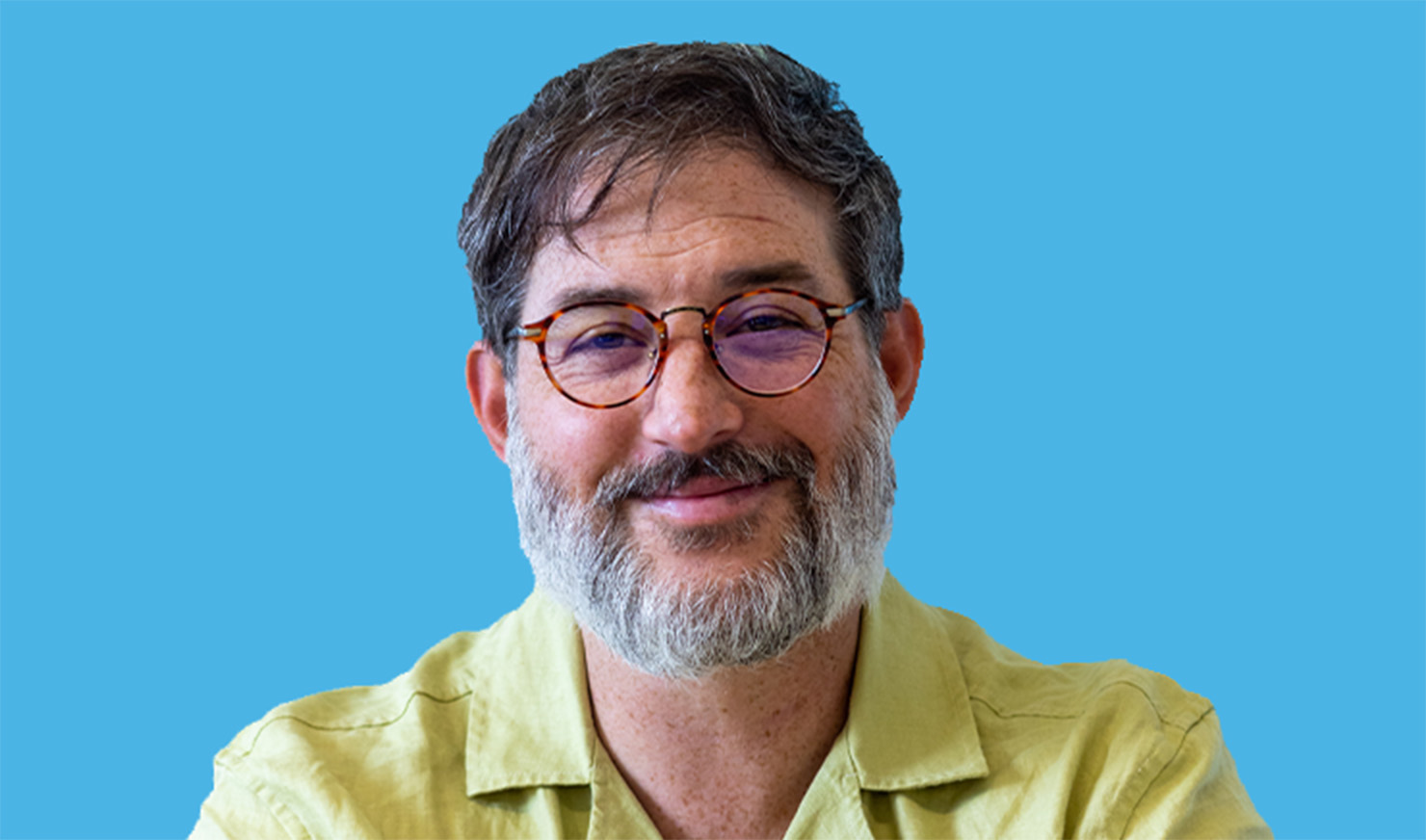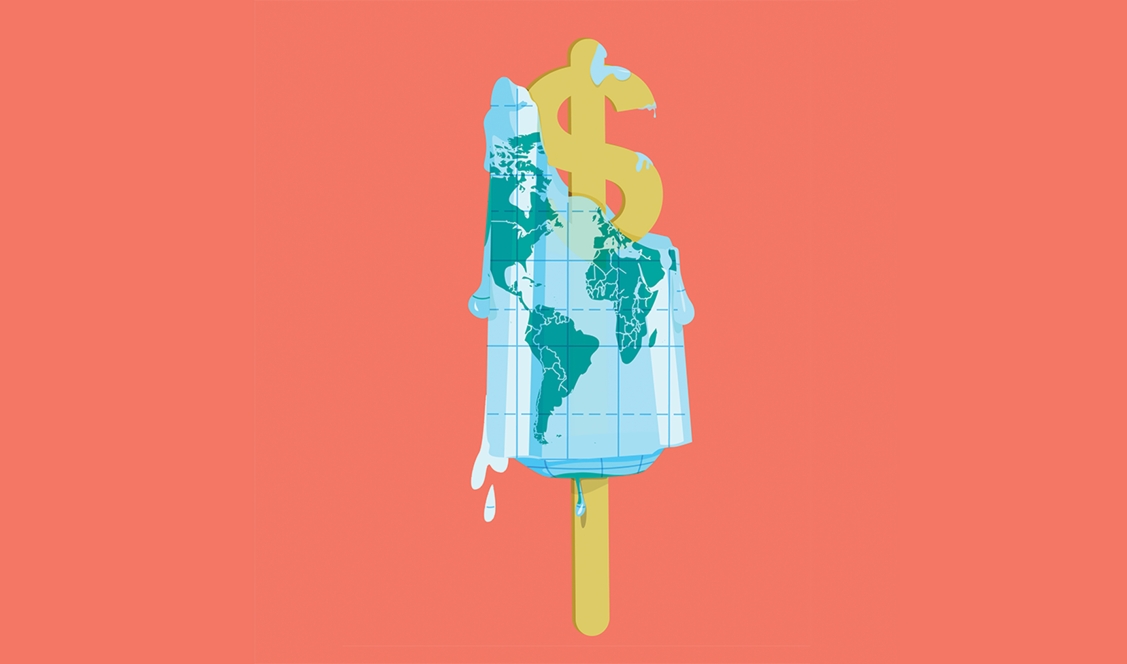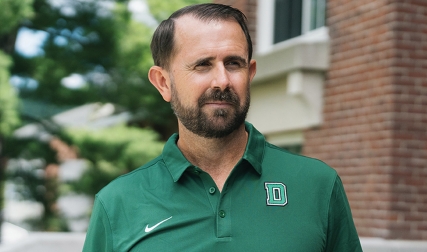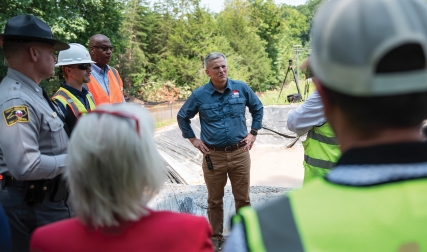If a reckless driver slams into your car, you know exactly whom to blame. But when, say, a historic flood puts your state capital underwater—as one did for Vermonters in July 2023—whom do you hold responsible?
In a famous 2003 paper published in the journal Nature, climate scientist Myles Allen posed the question in a slightly different way: “Will it ever be possible to sue anyone for damaging the climate?” Two decades later, two Dartmouth climate researchers say the answer is “Yes” and offer a how-to guide. In their recent paper, also in Nature, geography professor Justin Mankin and Christopher Callahan, Adv’23, demonstrated that trillions of dollars in economic losses from extreme heat can be directly attributed to emissions from specific fossil fuel companies.
Mankin leads Dartmouth’s Climate Modeling and Impacts Group (CMIG), which specializes in analyzing the risks, variability, and effects of climate change on the systems that people rely upon. His work with Callahan, who completed his Ph.D. working with CMIG, is a major step toward what some experts have called the holy grail of climate litigation: a scientifically robust method for linking specific emissions from individual polluters (whether corporations or entire countries) with specific damages.
“Who’s to say these particular emissions caused this flood that reached my doorjamb?” says Mankin. “That was always the question to resolve scientifically and was a bulwark legally: Could we provide specific causation?”
To meet that standard, used in civil lawsuits, a litigant would have to demonstrate a direct causal relationship between an individual company’s pollution and a specific harm. Mankin’s team draws on climate models, large datasets, and economic studies of climate impacts to construct plausible counterfactual worlds—in essence, the world as it would have unfolded absent those emissions. Their methodology is similar to the randomized control trials used to assess the efficacy of new drugs. “The treatment group is the world we live in, where fossil fuels were consumed, warmed the climate, and created novel hazards,” says Mankin. “The science and the art of what we do is constructing a defensible counterfactual—the control group.”
The analyses pioneered by Mankin’s group could become potent tools for pursuing future climate litigation. Their work could also prove crucial to the future viability of new “climate superfund” legislation recently adopted in Vermont and New York. These laws, modeled on the federal 1980 Superfund law that requires polluters to pay to clean up contaminated sites, seek to recover the costs of dealing with local climate-related damage from fossil-fuel producers. In 2024, Mankin advised Vermont officials as they developed the new law.
“It was helpful to have him as an expert in attribution science to testify to the scientific underpinnings that make the climate superfund bill possible,” says Anne Watson, a state senator on the Vermont Senate Natural Resources and Energy Committee. “He testified very convincingly that attribution science was sound enough to reliably move forward with the bill.”
In May, the Trump administration sued Vermont, arguing that the law usurps federal authority over foreign policy, energy policy, and regulation of air pollution. That came on the heels of suits launched late last year by the American Petroleum Institute and the U.S. Chamber of Commerce. Vermont’s attorney general has pledged to defend the climate superfund law against these challenges.

“The Vermont legislators,” Mankin says, “whether they were Republicans, Democrats, or independents, they all had that shared experience of seeing standing floods in downtown Montpelier and realizing, ‘This is really not normal.’ ” He recently offered testimony or guidance to lawmakers in Maine, Maryland, California, and Colorado considering similar bills. “These states are recognizing these costs they are contending with and appropriately seeking just restitution,” he says. “All of these states are contending with disasters.”
Earlier in his career, Mankin had developed expertise in a different kind of risk assessment. After studying political science at Columbia, he spent four years as an intelligence officer, serving in the Middle East, South Asia, and the United Kingdom. After earning master’s degrees in policy and development economics, he pivoted to climate science, earning a Ph.D. from Stanford, where he analyzed the effects of snow loss on water availability in different parts of the world.
Many of the students in his research group have similarly hybrid backgrounds, with training in both social and physical science. “Justin’s group is unique because it spans so many disciplines—climate science, hydrology, biogeochemistry, economics, political science, law, and more,” says Callahan, now an assistant professor of environmental science at Indiana University. “It was very clear he would be an excellent scientific mentor.”
Since he arrived in Hanover in 2018, Mankin has trained his team’s analytical acumen on a wide range of questions about the systems and patterns that circumscribe our lives. Is global warming making it harder to generate electricity from thermal power plants? Yes: The researchers have found that hotter temperatures lead operators to curtail output from nuclear, gas, and coal plants. Another CMIG analysis found that the extreme weather triggered around the globe by the recurring El Niño phenomenon of warming Pacific waters depresses economic growth for a decade.
In another study led by Callahan, a lifelong Chicago Cubs fan, Mankin’s group found that warmer temperatures help Major League baseball players belt more home runs (because air becomes thinner as it warms). While more lighthearted than much of CMIG’s other work, that study still offered an unsettling reminder of how climate change is seeping into and transforming every aspect of our lives, even the games we watch to escape the news.
“Global warming is not an abstraction,” Mankin says. “Our work has shifted from this prospective thinking about climate impacts in 2100 to instead looking behind us, documenting harms that have already occurred.”
Heatwaves are especially costly, exacting a heavy toll on economies through lost productivity, reduced crop yields, and premature deaths. Mankin and Callahan calculated that Chevron alone was responsible for $791 billion to $3.6 trillion in heat-related losses from 1991 to 2020. In that same period, greenhouse gases emitted by just 111 companies cost the world a whopping $28 trillion in heat-related damages.
Mankin was among 400 experts who helped draft the latest iteration of the National Climate Assessment, a congressionally mandated quadrennial report that compiles, in granular detail, information on the effects of climate change on specific localities around the United States. Local planners rely on it to prepare for drought, climate-proof infrastructure, and develop contingency plans to help vulnerable citizens during heatwaves. In April, the Trump administration summarily dismissed Mankin and his fellow authors, putting the next assessment in limbo. In July, the past five assessment reports were taken offline.
“That’s a really crucial synthesis of climate information for the development of local climate policy and adaption,” Mankin says. “That’s a massive informational loss.”
Meanwhile, he adds, “Climate damages are manifesting more quickly than many of us expected.”
Institutions such as Dartmouth, he says, can bolster research on climate risks and shore up the intellectual infrastructure to help communities understand and grapple with the impacts.
“How much money should Vermont seek as part of its climate superfund law? How large a combined sewer overflow pipe should be in Barre, Vermont? We have the expertise to inform those decisions. How do we ensure that we, as a really well-resourced institution, live our principles and furnish information for the Upper Valley and wider community such that they are well positioned to be resilient to unfolding climate impacts?”
Researchers have a moral responsibility to help with those hard decisions, Mankin says. “That’s why we pursue this work.”
Jonathan Mingle is an independent journalist based in Vermont and author of two books about climate and energy.





